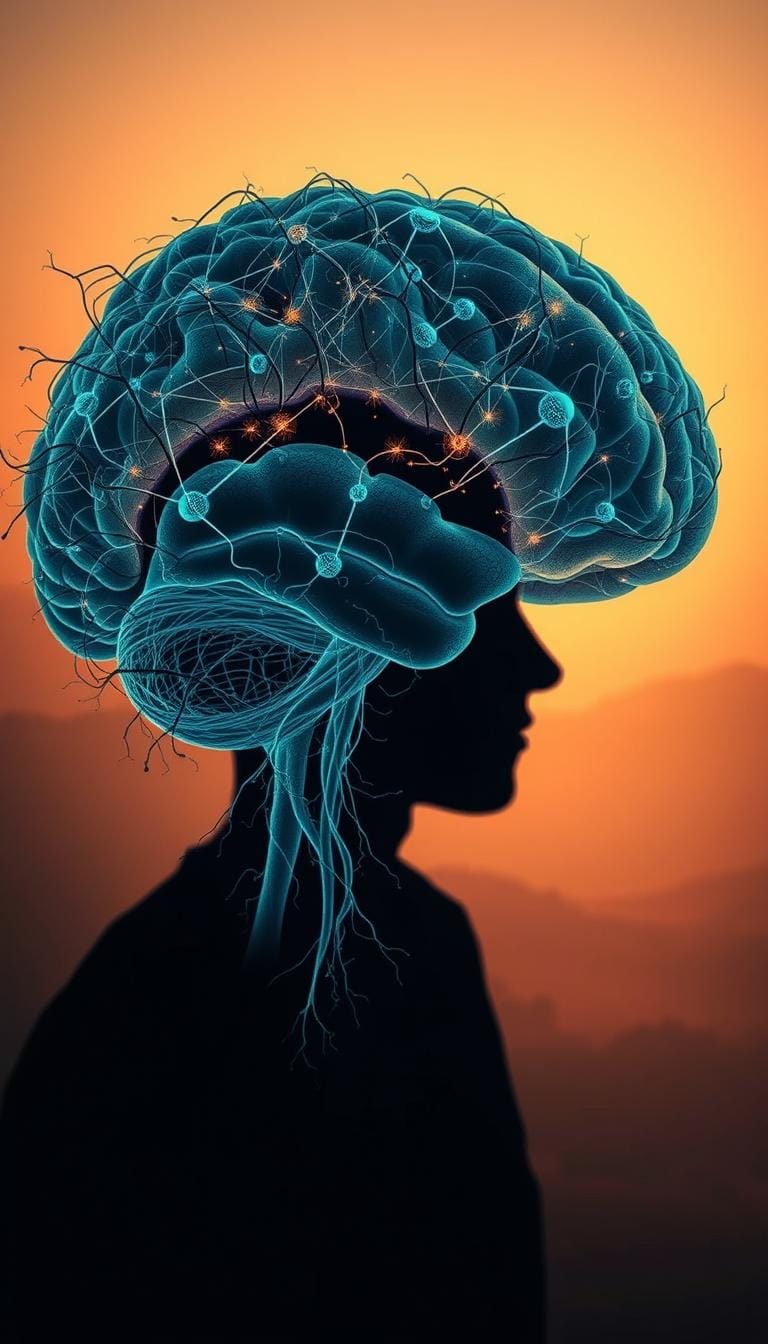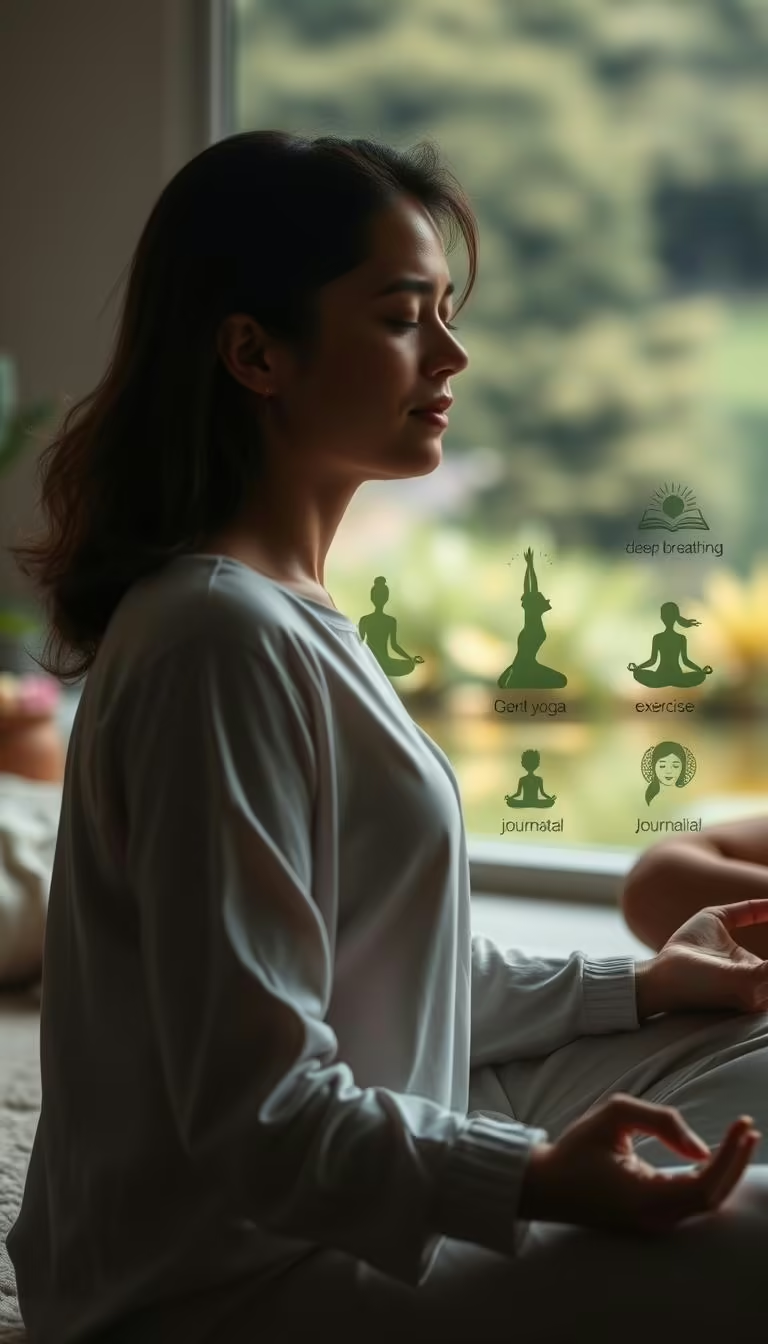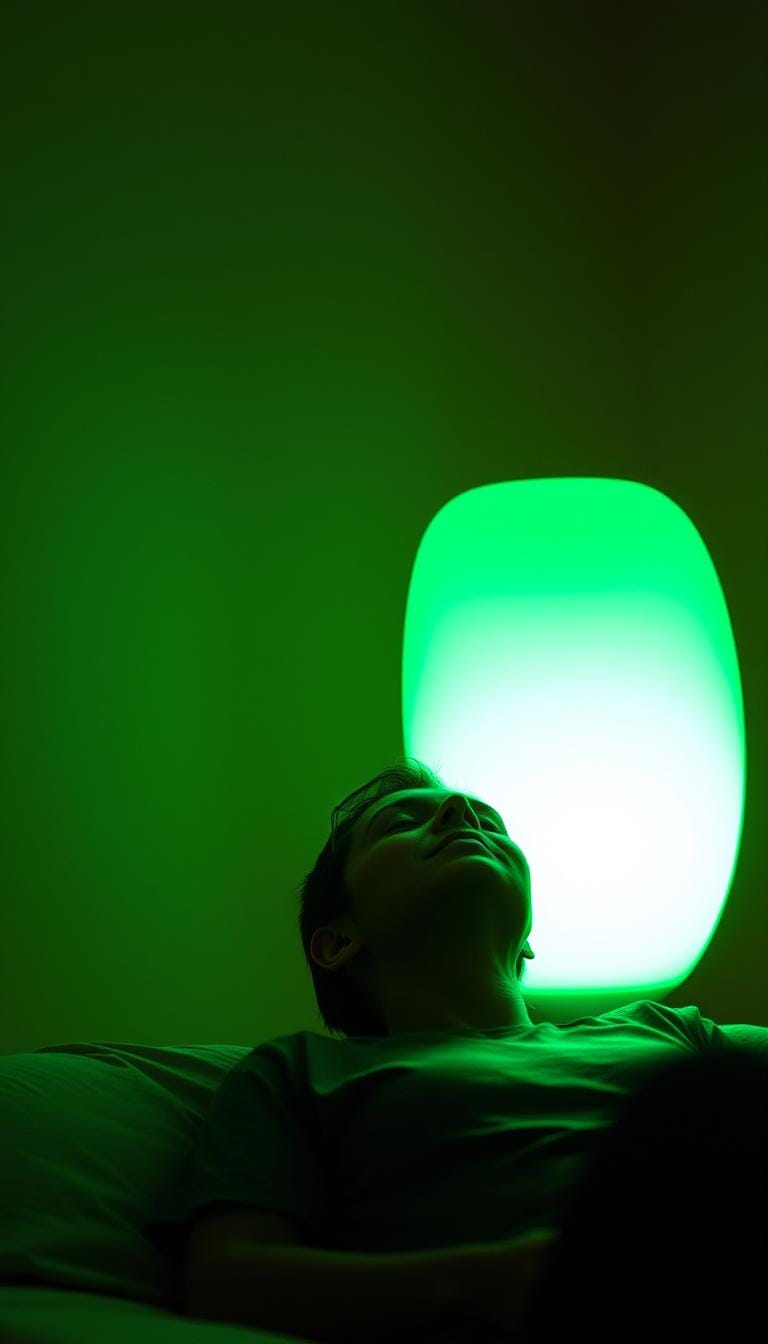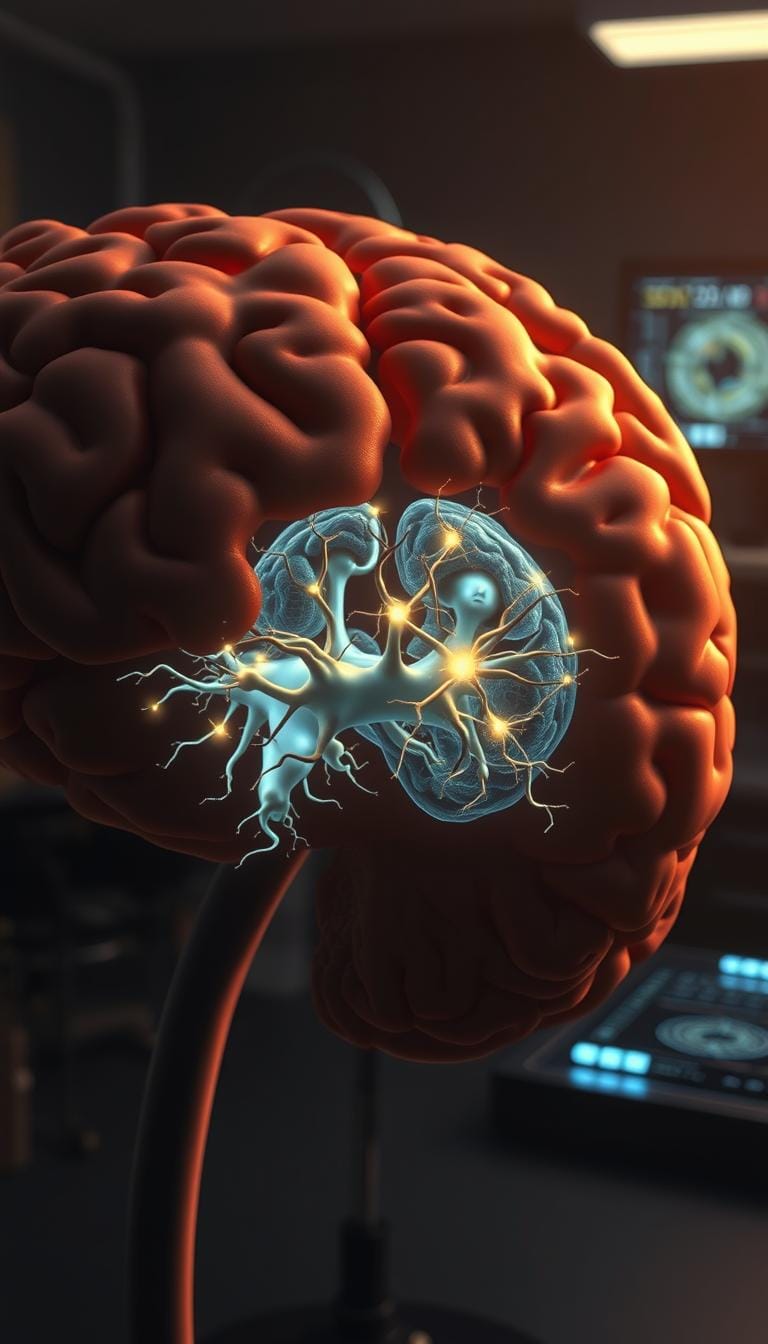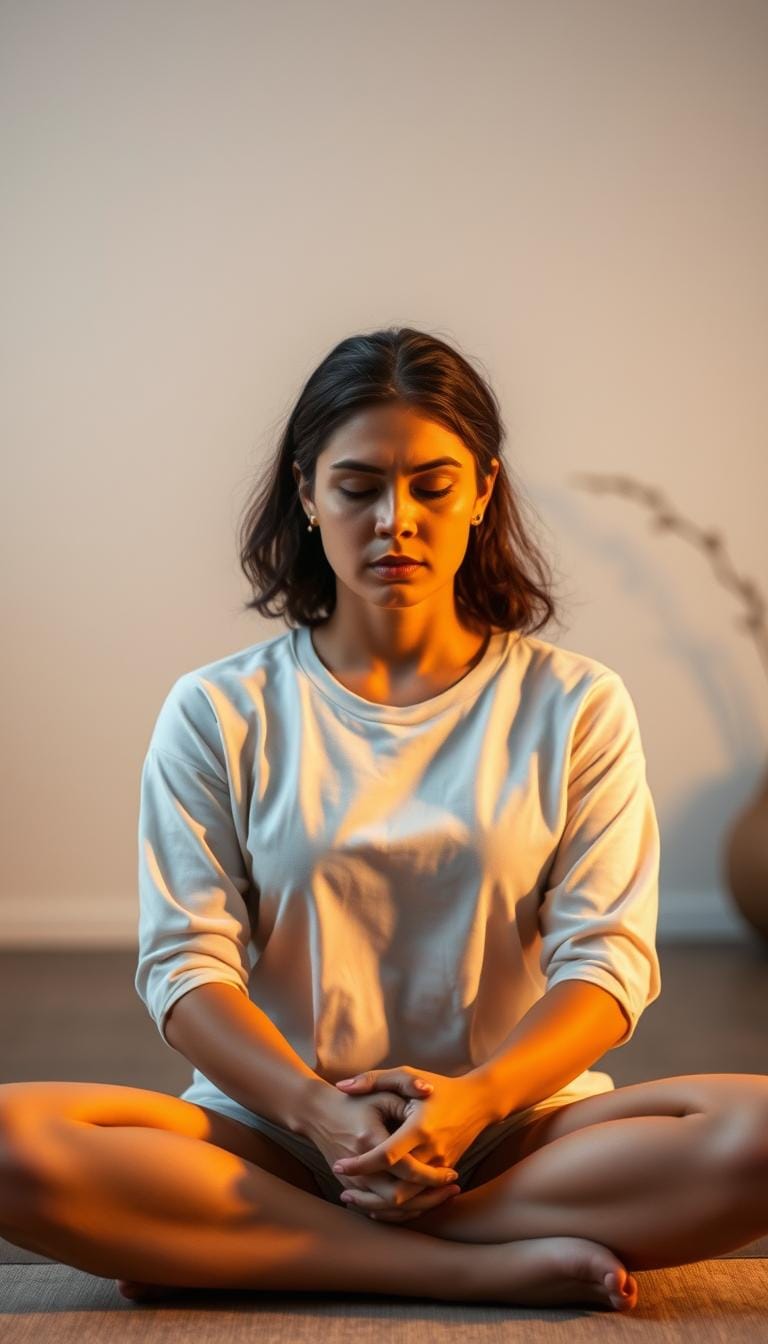What Does Green Light Therapy Do? 7 Ways It Boosts Sleep Quality
Table of Contents
I’ve been looking into new ways to get better sleep, and green light therapy seems promising. It uses green light to help our body clocks and sleep better.
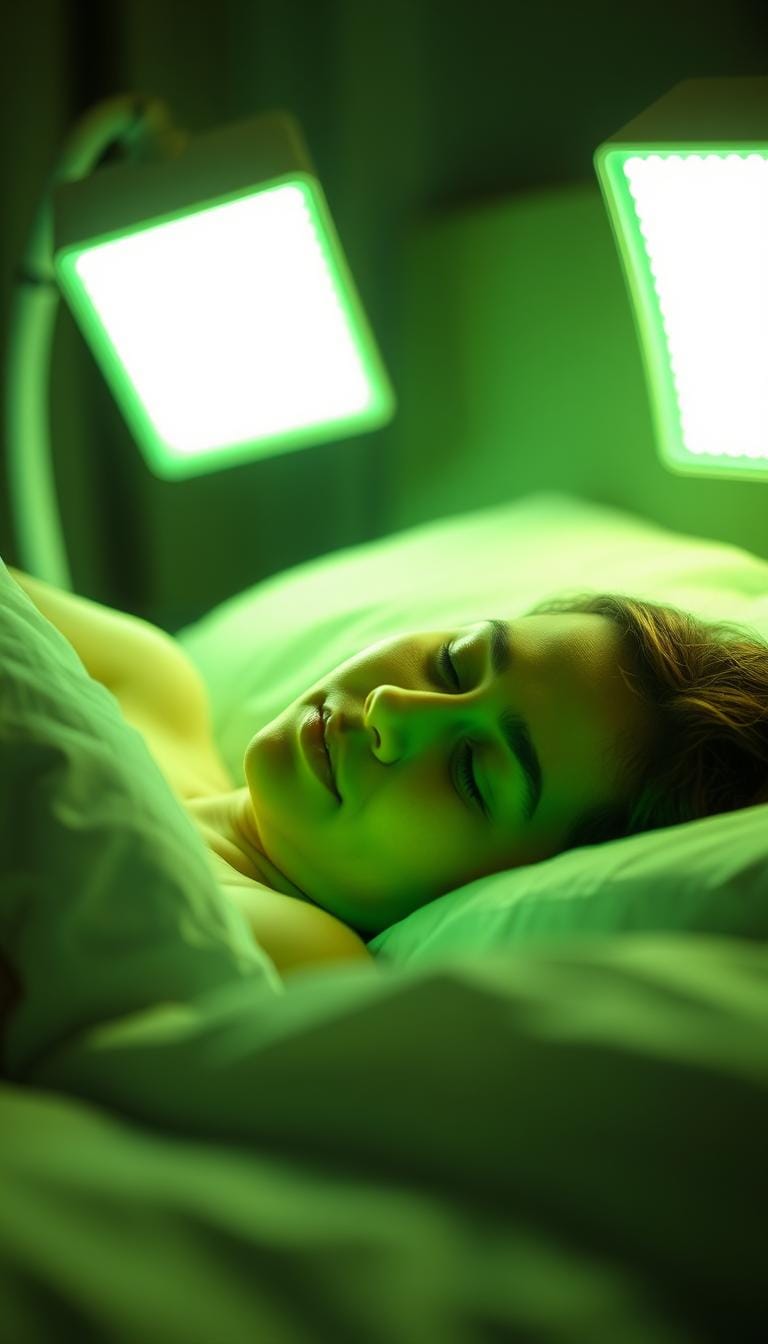
Studies show that green light therapy can really help with sleep. It changes how our body’s internal clock works. This can help people who struggle with sleep.
This article will share 7 key ways green light therapy can improve sleep. We’ll look at its benefits and how it works.
The Science Behind Green Light Therapy
Exploring green light therapy’s science is key. It involves using green light, often from special devices or lamps.
What Is Green Light Therapy?
Green light therapy is a non-invasive treatment. It uses green light to help with health issues like sleep problems. It’s thought to affect the body’s internal processes, but research is ongoing.
The History and Development of Light Therapy
Light therapy started in the early 20th century. Researchers looked at how different light wavelengths affect health. It was first used for Seasonal Affective Disorder (SAD). Now, it treats many conditions, with green light therapy being a new area of study.
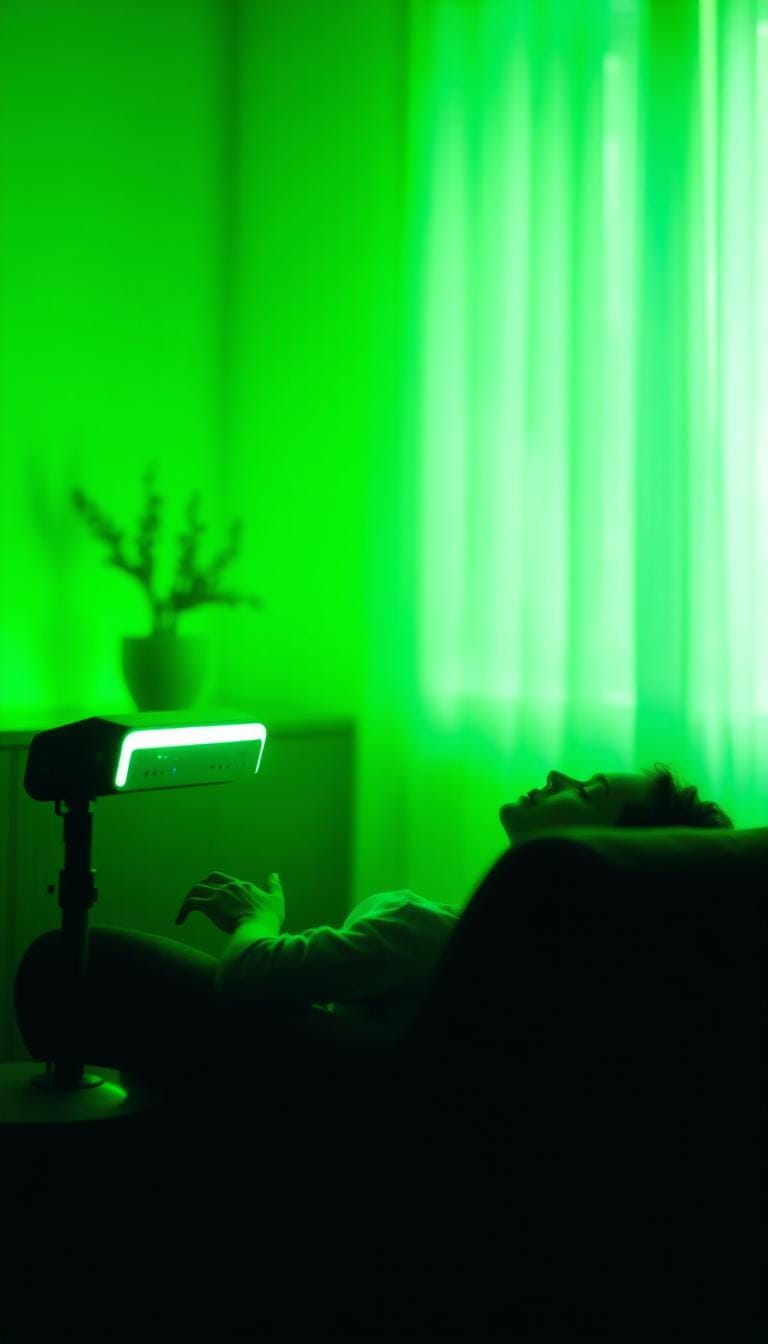
How Green Light Differs from Other Light Wavelengths
Green light has a unique wavelength. It’s believed to affect the body differently than red or blue light. Unlike blue light, which can harm sleep, green light might improve sleep quality without negative effects.
What Does Green Light Therapy Do? Understanding Its Mechanisms
Green light therapy is a way to help improve sleep. It works by affecting the body in several ways. This includes influencing how we feel and our sleep patterns.
How Green Light Affects Brain Activity
Green light therapy changes how our brain works. It does this by affecting our brain’s responses and the chemicals it uses to talk to itself.
Neurological Responses to Green Light
Studies show green light can make our brain relax. It’s seen as calming, unlike other lights that might wake us up.
Green Light’s Impact on Neurotransmitters
Green light also changes the chemicals in our brain that control sleep. This can lead to better sleep quality.
The Role of Photoreceptors in Light Therapy
Photoreceptors in our eyes are key to light therapy. They turn light into signals for our brain. This affects how our body works.
| Photoreceptor Type | Function | Role in Light Therapy |
|---|---|---|
| Rods | Sensitive to low light levels | Primarily involved in peripheral and night vision |
| Cones | Responsible for color vision | Important for detecting different wavelengths, including green light |
| Intrinsically Photosensitive Retinal Ganglion Cells (ipRGCs) | Respond to light and influence circadian rhythms | Crucial for the non-visual effects of light, including circadian regulation |
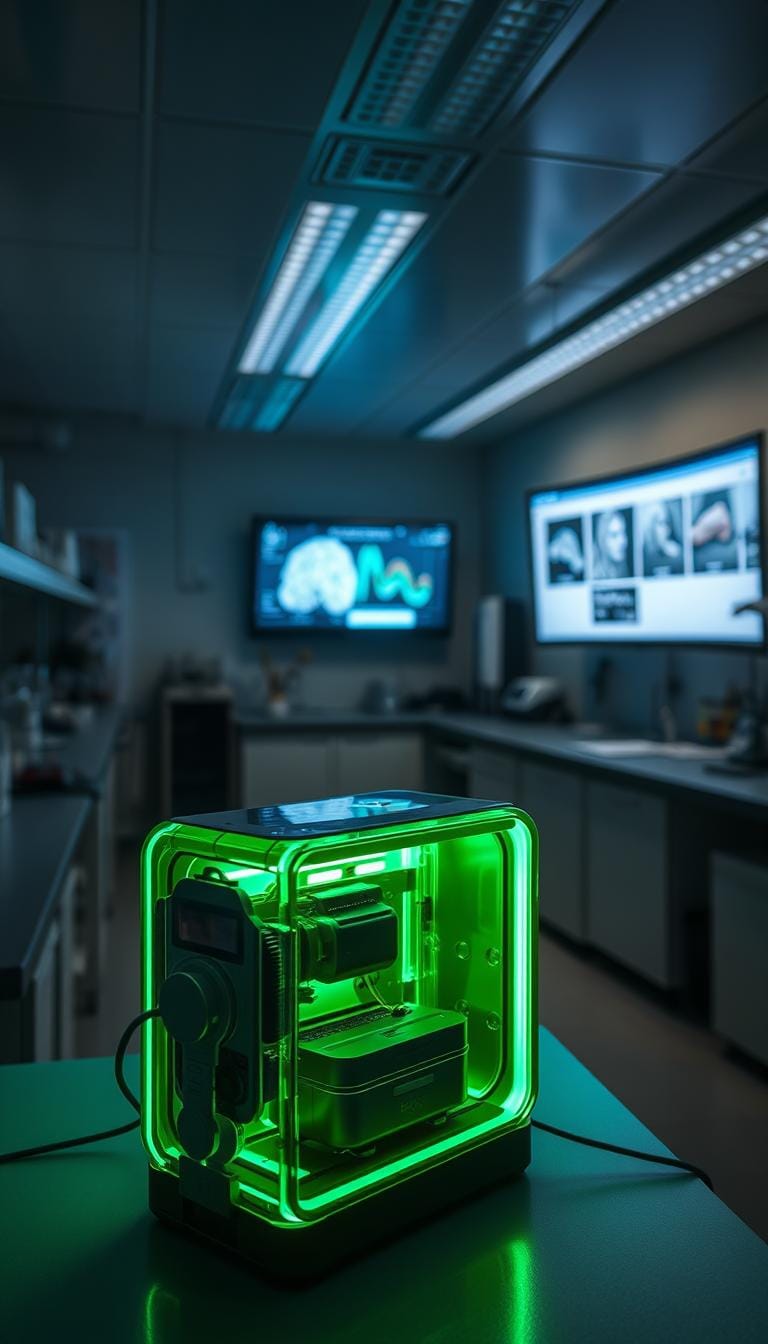
Knowing how green light therapy works helps us see its benefits. It affects our brain and eyes in ways that can improve sleep.
The Connection Between Light Exposure and Sleep Quality
Light plays a big role in our sleep. The kind of light we get can help or hurt our sleep. We’ll see how light affects our sleep, and not all light is the same.
How Different Light Wavelengths Impact Sleep
Light with different wavelengths affects sleep in different ways. Green light therapy is good for sleep. Studies show it can help our body clocks and sleep better.
| Light Type | Wavelength | Effect on Sleep |
|---|---|---|
| Blue Light | 400-450 nm | Suppresses melatonin production, disrupting sleep |
| Green Light | 500-550 nm | Enhances sleep quality, regulates circadian rhythms |
| Red Light | 600-650 nm | Minimal impact on sleep, potentially beneficial |
Why Green Light Is Special for Sleep Enhancement
Green light therapy is great for sleep because it doesn’t stop melatonin like blue light does. It helps our body clocks and makes sleep better.
The Problem with Blue Light Exposure
Blue light from screens messes with our sleep. It makes our brains think it’s daytime, which stops melatonin and makes it hard to sleep.
Knowing how light affects sleep helps us choose better light. This can lead to better sleep.
7 Ways Green Light Therapy Boosts Your Sleep Quality
Green light therapy can greatly improve your sleep quality. It’s a new method that helps with sleep issues. Let’s look at the seven main ways it helps.
1. Regulates Your Circadian Rhythm
Green light therapy helps set your body’s internal clock right. This is key for good sleep and wake times. Using green light at the right time can make your sleep better.
2. Reduces Sleep Onset Time
One big benefit of green light therapy is it makes falling asleep faster. Green light gets your body ready for sleep quicker.
3. Increases Natural Melatonin Production
Green light therapy also boosts melatonin, the sleep hormone. More melatonin means better sleep and longer sleep times.
4. Minimizes Night Wakings and Sleep Disruptions
Green light therapy makes sleep more stable. This means fewer night wakings and better sleep overall.
5. Enhances Deep Sleep Phases
Green light helps improve deep sleep phases. These phases are important for healing and feeling refreshed. Better deep sleep means better overall sleep.
6. Reduces Headache-Related Sleep Disturbances
Green light therapy also helps with sleep problems caused by headaches. It makes sleep uninterrupted.
7. Alleviates Anxiety for More Restful Sleep
Lastly, green light therapy reduces anxiety. Anxiety can disrupt sleep. Less anxiety means better sleep.
| Benefit | Description | Impact on Sleep |
|---|---|---|
| Regulates Circadian Rhythm | Synchronizes the body’s internal clock | Improves sleep timing and quality |
| Reduces Sleep Onset Time | Prepares the body for sleep more efficiently | Faster sleep onset |
| Increases Melatonin Production | Boosts natural melatonin levels | Enhances sleep quality and duration |
| Minimizes Night Wakings | Creates a more stable sleep environment | More restful and continuous sleep |
In conclusion, green light therapy benefits are wide-ranging. They offer a complete way to improve sleep quality. By using these benefits, you can significantly improve your sleep.
How to Use Green Light Therapy for Sleep Improvement
To use green light therapy for better sleep, you need to know how. It’s about the right amount of time, how bright it should be, and what devices to use at home.
Recommended Exposure Times and Intensity Levels
Green light therapy works best with the right amount of green light. Studies show 20-30 minutes of green light can help sleep quality. The light should be easy on your eyes, around 40-60 lux for sleep therapy.
Best Time of Day for Green Light Therapy Sessions
When to use green light therapy matters a lot. It depends on your sleep schedule and goals. Evening use, 1-2 hours before bed, is common. But, some find morning use helps with their body clock.
Devices and Methods for Home Use
There are many green light therapy devices for home use. This makes it easy to add this therapy to your daily life.
Green Light Bulbs and Lamps
Using green light therapy at home is simple. Just swap out your regular bulbs for green ones or get a green light lamp. Place them in rooms you spend a lot of time in, like your bedroom or living room.
Portable Green Light Devices
For a more focused approach, there are portable green light devices. They’re great for day or evening use. They’re perfect for those with busy lives or who travel a lot.
Professional Green Light Therapy Options
Some people prefer professional green light therapy or more intense sessions. This is available in clinics.
Knowing how to use green light therapy right can improve your sleep. It’s about the right time, brightness, and devices.
Green Light Therapy Benefits Beyond Sleep
Green light therapy does more than just help you sleep better. It also improves health and wellness in many ways. Its effects on sleep are well-known, but it has even more benefits.
Pain Management Applications
Studies show green light therapy can help with pain. It makes you less sensitive to pain, which is great for those who can’t take regular pain meds. It’s a safe and easy way to manage chronic pain.
Migraine and Headache Relief
Green light therapy might also help with migraines and headaches. It could make these painful episodes less frequent and less severe. This is good news for people who suffer from these conditions.
Mood Enhancement Effects
Green light therapy might also boost your mood. It could help with depression symptoms. This makes it a promising treatment for mental health issues.
Potential Cognitive Benefits
Research is looking into green light therapy’s effects on the brain. It might improve focus and mental clarity. This could be helpful for people with brain problems or those wanting to boost their brainpower.
In summary, green light therapy offers many benefits. It’s not just for sleep anymore. It can help with pain, migraines, mood, and even brain function. As scientists learn more, its importance for health and wellness will grow.
Green Light Therapy for Skin: Research and Applications
Green light therapy is not just for sleep. It also has benefits for the skin. Research is showing that green light can help with different skin problems.
Skin Healing Properties
Green light therapy helps the skin heal faster. It promotes tissue repair and reduces swelling. Studies say it boosts growth factors important for healing.
Anti-Inflammatory Effects on Skin Conditions
Green light therapy fights inflammation in the skin. This is good news for people with acne or rosacea. It can make symptoms better and improve how the skin looks.
Combining with Other Therapies for Enhanced Results
Green light therapy works well with other treatments.
Using green light with other therapies can make it even more effective.
Green Light with Red Light Therapy
Green light and red light therapy together are exciting. Red light goes deep into the skin and heals. They might treat many skin issues together.
Green Light in Professional Skin Treatments
In professional settings, green light therapy is used in skin treatments. It’s a non-invasive option for those looking for new ways to care for their skin.
My Personal Experience Using Green Light Therapy for Better Sleep
I was curious about green light therapy for sleep when I first heard about it. I had trouble sleeping regularly and was looking for a solution. I started using green light therapy with hope and a willingness to adjust as needed.
Initial Results and Adjustments to My Routine
I began by using a green light device for 30 minutes before bed. I found that my sleep onset time decreased and I felt more relaxed. But, I had to adjust the intensity to avoid discomfort.
I started with a low intensity and slowly increased it. This helped me feel comfortable.
Some key adjustments I made included:
- Changing the duration of exposure based on my sleep schedule
- Experimenting with different timings, such as morning and evening sessions
- Combining green light therapy with other relaxation techniques, like meditation
Long-Term Sleep Benefits I’ve Noticed
After using green light therapy for a few weeks, I saw significant improvements in my sleep quality. I slept more soundly and woke up less often. My mood also improved, thanks to better sleep.
The benefits I’ve experienced include:
- Regulated circadian rhythm
- Reduced sleep disruptions
- Increased energy levels during the day
Tips I’ve Learned Through Trial and Error
Through my experience, I’ve learned that consistency is key with green light therapy. It’s important to stick to a routine and be patient. Combining it with other sleep habits, like a cool bedroom and avoiding screens before bed, can make it more effective.
Comparing Green Light Therapy to Other Sleep Solutions
I’ve looked into many ways to improve sleep. Green light therapy stands out when compared to other methods. It’s important to know how each approach works.
Green Light Therapy vs. Melatonin Supplements
Green light therapy and melatonin supplements help with sleep. Melatonin supplements add the hormone directly. Green light therapy boosts it naturally.
They differ in how they work. Supplements give a quick fix. Green light therapy uses the body’s own rhythm.
Green Light Therapy vs. Blue Light Blocking Glasses
Blue light blocking glasses cut down on sleep-disrupting light. Green light therapy uses a special light to help sleep. They tackle light’s effect on sleep but in different ways.
| Sleep Solution | Method of Action | Key Benefits |
|---|---|---|
| Green Light Therapy | Stimulates natural melatonin production | Non-invasive, promotes natural sleep regulation |
| Melatonin Supplements | Directly introduces melatonin into the body | Quick results, widely available |
| Blue Light Blocking Glasses | Reduces exposure to sleep-disrupting light | Easy to use, effective for screen time |
Green Light Therapy vs. Traditional Sleep Medications
Traditional sleep meds can have side effects and lead to addiction. Green light therapy is safer and doesn’t involve drugs.
Combining Approaches for Optimal Results
Using green light therapy with other methods like melatonin or blue light glasses can work better.
Knowing the good and bad of each sleep aid helps in choosing the best way to sleep better.
Potential Side Effects and Considerations
Green light therapy is usually safe, but it’s important to know about possible side effects. Understanding these can help make sure you have a safe and effective experience.
Who Should Avoid Green Light Therapy
Some people should be careful or not use green light therapy at all. This includes those with eye problems or taking light-sensitive medications. For example, people with cataracts or who have had eye surgery should talk to their doctor first.
Consulting Healthcare Providers Before Starting
It’s a good idea to talk to a healthcare provider before starting green light therapy. This is true for people with health issues. They can check if green light therapy is right for you and how much you should use it. They can also help you use it safely with other treatments.
Combining with Other Treatments Safely
When using green light therapy with other treatments, be careful to avoid bad reactions. For example, using it with some medicines or other light therapies might need changes in how long or how bright it is. Here are some important things to remember:
- Tell your healthcare provider about all your treatments and medicines.
- Watch how your body reacts to green light therapy and tell your doctor if you notice any problems.
- Change the time and strength of green light therapy based on what your doctor says.
By knowing these things and taking the right steps, you can safely use green light therapy.
Conclusion
Green light therapy is showing great promise for better sleep. It works by adjusting our body’s natural clock and boosting melatonin levels. This can lead to deeper, more restful sleep.
Studies have shown that green light therapy can help us fall asleep faster. It also helps our bodies produce more melatonin. These changes can greatly improve how well we sleep.
I’ve seen the benefits of green light therapy firsthand. Using a green light device in the evening has helped me sleep better. It’s made a big difference in my overall health and happiness.
If you’re thinking about trying green light therapy, talk to a doctor first. They can help you figure out if it’s right for you. With its benefits and few side effects, it’s worth considering for better sleep.

